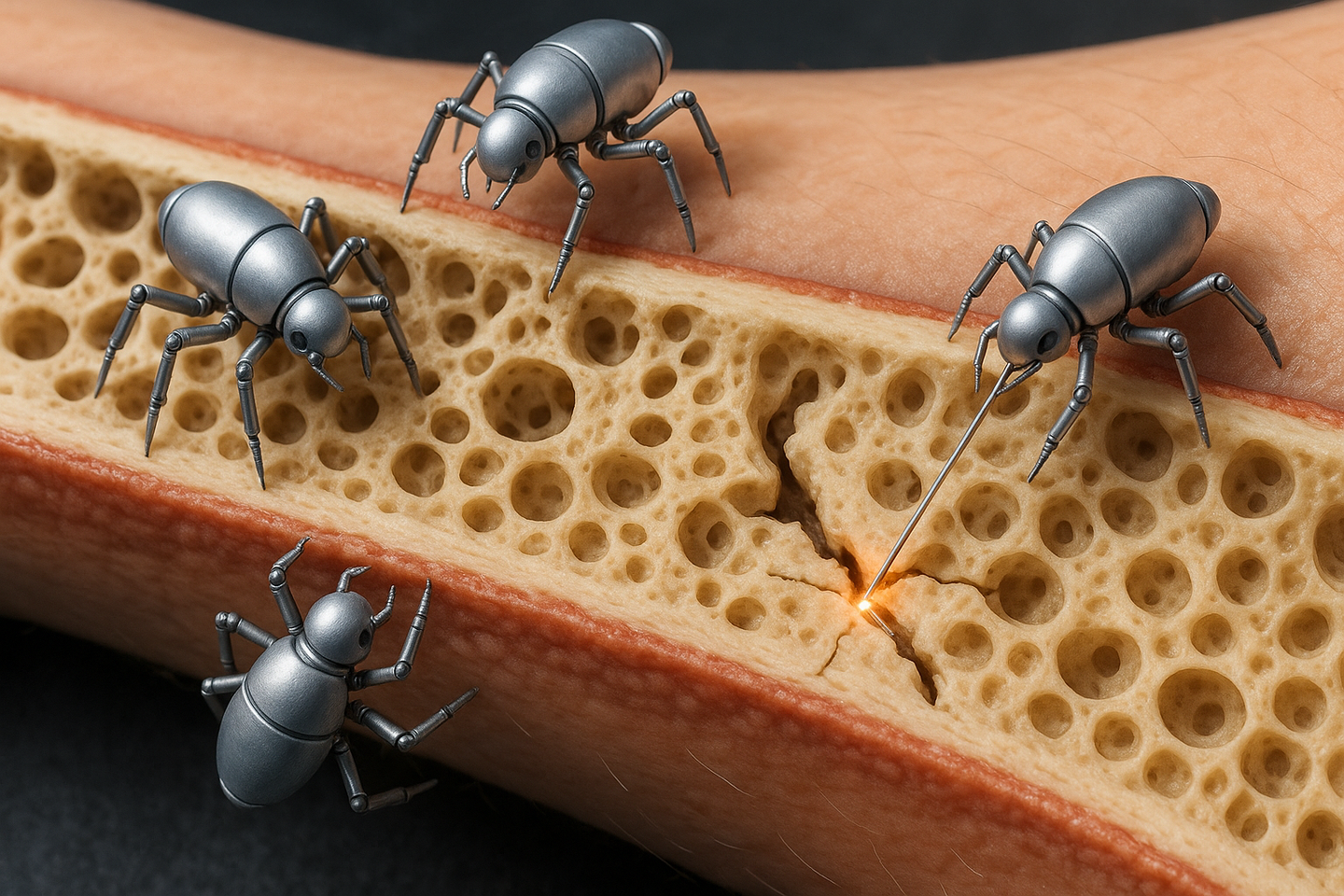Scientists split single phonons on a chip bringing hybrid quantum networks closer to reality
A tiny silicon chip splits single phonons, linking quantum devices and paving the way for scalable hybrid quantum computing.

Researchers built a chip that can split single phonons—the smallest units of vibration. (CREDIT: AI-generated image / The Brighter Side of News)
Researchers from Delft University of Technology have made a breakthrough that could alter the future of quantum technology. They created a chip-based device that can split phonons—the quantized smallest unit of vibration—in the same way a beam splitter divides light. It is a promising foundation for hybrid quantum networks, where different kinds of quantum systems are finally speaking the same language.
A New Way to Route Quantum Vibrations
The researchers, led by Simon Gröblacher, developed what's called a phononic directional coupler. The device measures just 200 by 5 micrometers in size—about the width of a human hair. It acts like a fork in the road for vibrations. It can take a single phonon and guide it down one of two paths, essentially serving as a mechanical counterpart to an optical beam splitter.
In traditional optics, a directional coupler guides light through infinitesimal waveguides. Gröblacher and his team did the equivalent for sound at the quantum level, developing a silicon chip that guides high-frequency vibrations through structures at the nanoscale. The structures make phonons collide so that they can interact in a well-defined, controllable way.
"Phonons are suitable for on-chip quantum messages interconnecting highly dissimilar quantum systems," Gröblacher explained. He believes that in order to build functional phononic circuits, researchers need a complete set of components that can generate, guide, split, and detect single quanta of vibration. Although sources and waveguides already exist, a miniaturized splitter is still missing.
From Classical Tests to Quantum Proof
The team began by passing coherent phonon wave packets—essentially several phonons moving together—through the coupler to measure how the vibrations divided between two output pathways. By adjusting the length of coupling, or the amount of distance the two pathways interacted, they could exactly control the energy split between outputs. The results matched their theoretical simulations, confirming the design operated as intended.
Then, the final test: Could it split a single phonon? Using a technique called phonon heralding, the researchers generated and detected single quanta of vibration. The device behaved as a true quantum beam splitter—single phonons departed by one of two paths according to quantum probability, not deterministic classical motion.
This confirmed that the chip operates not only in the classical regime but also in the delicate quantum domain, in which information is transmitted by discrete particles rather than waves.
Tiny Device, Big Challenges
Despite its success, the coupler is not without its challenges. Phonons tend to lose energy quickly as they move through materials, and reducing that loss is key to moving forward. The group is working on improving fabrication methods and adding more complex elements, such as phononic interferometers, that might further control and manipulate quantum signals.
The scientists designed their device with phononic-crystal waveguides that trap vibrations tightly and reduce unwanted interference between channels. These high-frequency phonons, which are measured in gigahertz, can travel farther without losing their quantum properties.
Because the coupler is made on silicon, it can be merged with other chip technologies, opening the path to large-scale quantum circuits. "The coupler we realized acts like a junction in a quantum mail network," Gröblacher said. "It can split, route, or merge single quantum vibrations in such a manner that an excitation created in one processor can be faithfully transferred to another processor—or even multiple—on the same chip."
Building Bridges Between Quantum Worlds
Quantum technologies currently rely on very dissimilar systems—superconducting qubits for high-speed processing, photons for communication, and spin systems for long-term data storage. However, these systems do not typically interact directly with one another. Phonons could bridge that divide by linking devices founded on different physical principles.
This coupler completes a puzzle piece of that vision. By dividing and directing phonons on a chip, scientists can connect quantum processors made of totally different materials. That flexibility is important for hybrid quantum networks, where information is ferried between fast but temperamental systems and slower but more stable ones.
The scientists believe that phonons can play the same role in quantum mechanics as light does in optics. Just as mirrors, beam splitters, and couplers are the foundation of photonic devices, these microscopic vibration routers could serve a similar role in quantum technologies. One day, they may become the fundamental building blocks for quantum devices.
Practical Implications of the Research
The breakthrough opens the door to a new class of phononic circuits capable of ferrying information between superconducting qubits and spin systems. Down the line, that could lead to more compact and powerful quantum computers. It could also open up ultra-sensitive mechanical sensors to applications ranging from materials testing to biomedical diagnostics.
Phonon-based circuits could make quantum technologies both smaller and more energy efficient by doing away with the need for bulky optical setups.
With better fabrication, the ability to generate, guide, and detect single phonons on silicon chips could lead to fingertip-sized useful hybrid quantum devices.
Research findings are available online in the journal Optica Quantum.
Related Stories
- Quantum networks could unlock the secrets of time and gravity
- Scientists create the next-generation of secure quantum communication
- Quantum computing milestone links atoms over vast distances
Like these kind of feel good stories? Get The Brighter Side of News' newsletter.
Shy Cohen
Science & Technology Writer



